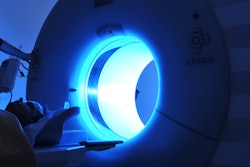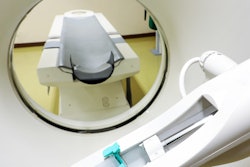
Modifying the imaging order entry process in an electronic health record (EHR) can significantly reduce the number of CT exams that require iodinated contrast agents, according to research published on August 3 in the American Journal of Roentgenology.
After implementing two interventions in their health system's EHR aimed at guiding ordering physicians away from using contrast in certain body CT exams, a group led by Dr. Daniel Glaser of Harvard Medical School found that the initiatives yielded a 12% drop in the mean number of patients receiving contrast-enhanced CT exams each weekday.
"EHR order entry-based interventions implemented in response to the global contrast media shortage significantly reduced contrast-enhanced CT utilization within a large health system," the authors wrote.
The health institution implemented two interventions in response to the shortage of GE Healthcare's Omnipaque iodinated contrast media (iohexol) caused by the shutdown of the vendor's plant in China in April.
On May 10, 2022, the group revised the ordering interface on their health system's EHR (Hyperspace, Epic System) to alert physicians whenever they ordered highly utilized body CT exams (neck, chest, or abdomen and pelvis). In addition to informing the ordering physicians of the contrast shortage, the alert recommended specific alternate imaging strategies. Furthermore, all practitioners in the health system received an email with information about the iohexol shortage.
Six days later, further revisions to the EHR ordering interface were rolled out. Physicians ordering body CT exams were required to enter detailed clinical information into what was previously an optional box for free-text information, according to the researchers.
For orders for "CT with IV contrast media" or for "CT with IV contrast media at the radiologist's direction," the radiologist or trainee protocoling the exam used the information to determine whether the study should include contrast.
| Impact of EHR order entry intervention on contrast media use | ||||
| Preintervention (April 1, 2022, to May 9, 2022) | Post-intervention period 1 (May 10, 2022, to May 15, 2022) | Post-intervention period 2 (May 16, 2022, to July 3, 2022) | Change from preintervention to post-intervention period 2 | |
| Mean no. of patients receiving contrast-enhanced CT per weekday | 726 | 689 | 639 | -12.1% |
| Mean no. of patients receiving contrast-enhanced body CT per weekday | 561 | 531 | 491 | -12.4% |
| Mean no. of orders for CT with IV contrast media per weekday | 154 | 143 | 131 | -15.2% |
| Mean no. of orders for CT without IV contrast media per weekday | 196 | 202 | 221 | 11.2% |
All differences between the preintervention and second post-intervention periods were statistically significant (p < 0.001).
"The findings indicate the ability to rapidly achieve changes in ordering clinician behavior and subsequent clinical practice using system-wide EHR changes," the authors wrote.
Furthermore, 53.8% of CT exams in the preintervention period were performed with intravenous contrast, dropping to 42.1% in the first post-intervention period and 48.7% in the second post-intervention period, according to the researchers.
"Factors contributing to the observed decrease in utilization of contrast-enhanced CT include a shift toward referring clinicians more often ordering CT without, rather than with, IV contrast media, as well as radiologists more commonly not using IV contrast media for examinations ordered with IV contrast at the radiologist's discretion," they wrote.
The researchers also observed a 2.7% drop in the total number of patients receiving any type of CT exam from the two interventions.
"Although not known for certain based on our analysis, the small decline in patients who underwent CT likely indicates instances of referrers either ordering an alternate imaging modality or delaying imaging altogether," they wrote.




















